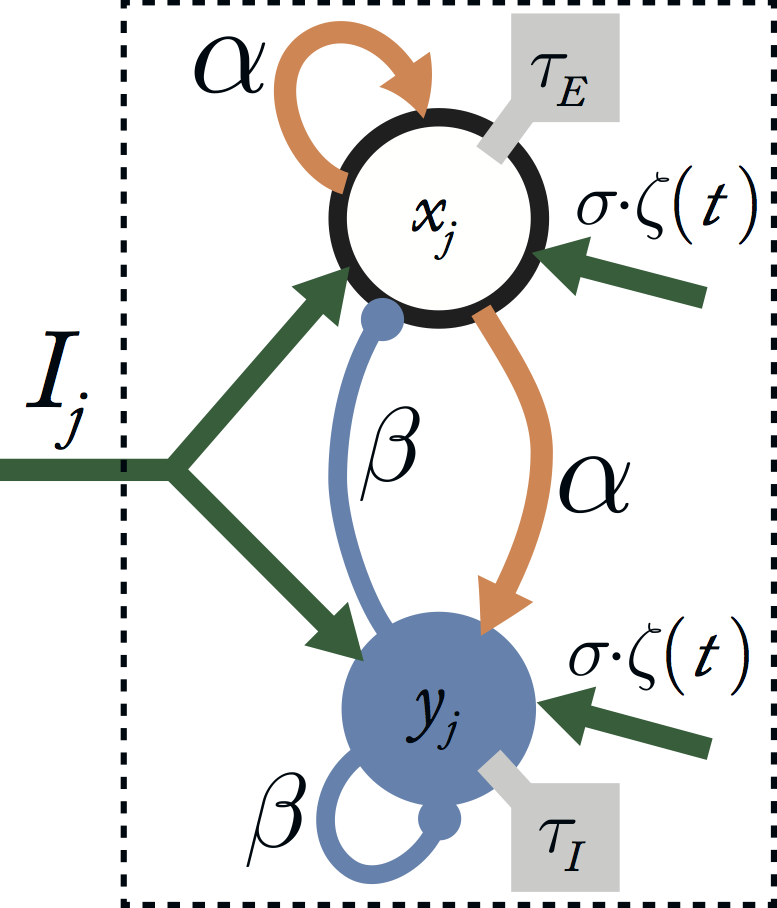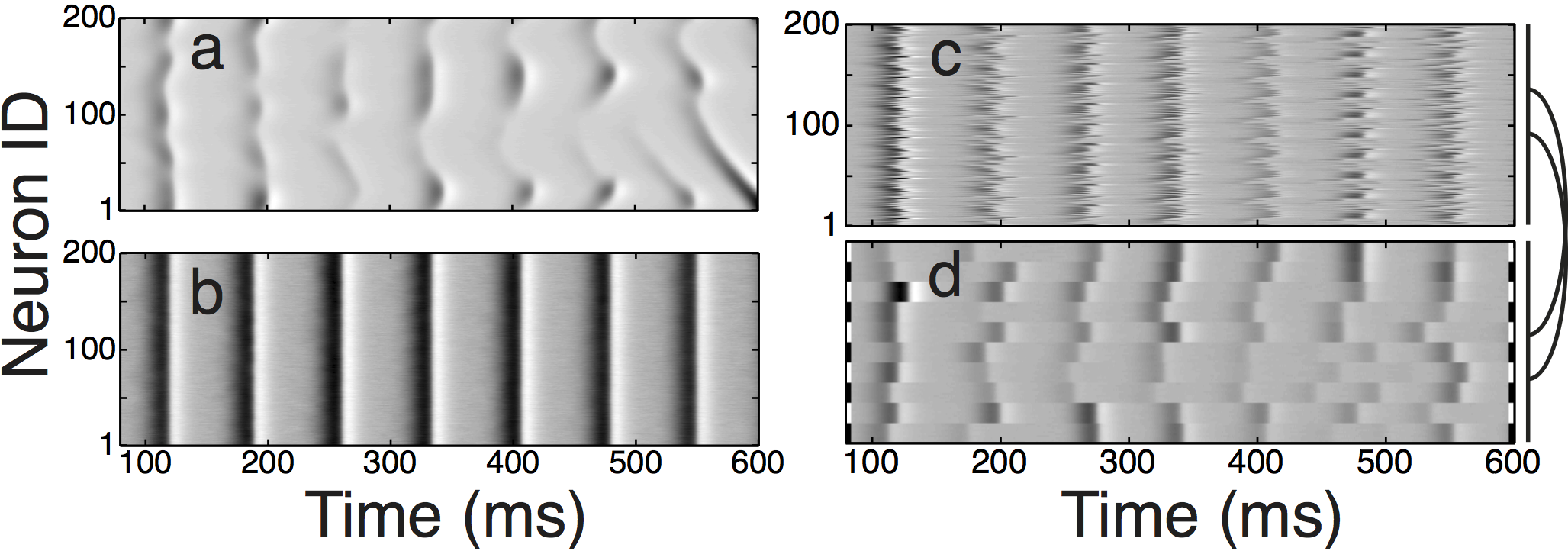Transient synchrony
Dynamics and noise robustness of cortical oscillators
6th November, 2012Figure 1

Figure 1
Figure 2

Figure 2
Figure 3: Pattern formation through local/long-range synchronisation

Figure 3: Pattern formation through local/long-range synchronisation
While robustness to noise and independence from prior state are phenomena often believed to be determined by the overall topology of a network, we show that these features can be present at the level of a single limit cycle, representing the activity of a small group of neurons inside a cortical column. In particular, we find a bifurcation where this limit cycle changes from being susceptible to noise to being remarkably robust to noise, such that any history of input is erased over a single oscillation. We then show how this property leads to spatially-patterned synchronization and pattern expression when many such limit cycles are coupled in a large-scale model of the superficial layers of visual cortex.
Our elemental unit is a Wilson-Cowan oscillator consisting of a recurrently coupled pair of excitatory and inhibitory linear-threshold neurons (Figure 2), each representing a small population of neurons in a cortical column. An elemental unit of this form can behave as a limit-cycle oscillator (Figure 1).
Networks of these limit-cycle oscillators displayed several synchronization modes, depending on the ratio of local to long-range excitatory coupling (Figure 3). A spatially-patterned synchronization mode exists for sufficiently strong long-range coupling, providing a mechanism for pattern expression in neural fields. The stability of a spatial pattern selected during an oscillation cycle is ensured by the noise robustness of individual oscillators. Interestingly, the insensitivity to perturbation displayed by oscillator units is not effected by the coupling architecture of the network. The robustness of the pattern expression mechanism is due to the intrinsic properties of the oscillator limit cycle, and not due to the large-scale coupling architecture. However, the form of the limit cycle also provides a built-in “reset” that enables desynchronization of the network by noise at a certain phase of the oscillation. This reset point occurs in the low activity phase of the oscillation, where the greatest possible separation between any two nearby trajectories was minimal. Therefore a new spatial synchronisation pattern is selected by the network at precisely the phase where the effect of prior input has the least impact. Existing neural models that rely on synchronised oscillations either reach a fixed synchronization pattern or require an extra mechanism to provide a network reset. The network we presented in this paper switches between different spatial patterns using only an intrinsic network mechanism.
Noise robustness in the large-scale network was provided by individual oscillators, rather then by the long-range coupling architecture. This suggests that while the topology of long-range coupling in cortex may be constrained by the forms of patterned synchronisation expressed by cortex, it is not necessarily constrained by the requirement of noise robustness and independence of prior input.
Publications
This work was published in New Journal of Physics: A Landsman, E Neftci and DR Muir. 2012. Noise robustness and spatially-patterned synchronization of cortical oscillators New Journal of Physics 14 12:123031. DOI: 10.1088/1367-2630/14/12/123031
Acknowledgements
This work grew in the rich soil of Capo Caccia. We also thank Rodney Douglas for crucial discussions at the genesis of this research, and the Institute for Neuroinformatics for supporting the publication.
Funding
This work was funded in part by the European Commission (FP6 2005-015803 DAISY to Dylan R Muir; FP7 2009-231168 SCANDLE to Emre Neftci and FP7-PEOPLE-2010-IFF 275313 to ASL); by the John Crampton Travelling Scholarship to DRM; and by CSN fellowships to DRM and to Alexandra Landsman.